“I am good, but not an angel. I do sin, but I am not the devil. I am just a small girl in a big world trying to find someone to love.”—- Marilyn Monroe
Monroe was born, Norma Jeane Mortenson, in June 1926. Her father was unknown and she was baptised as Norma Jeane Baker; she spent many years in foster homes because of her family situation.
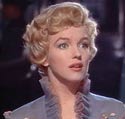 Monroe
married Jimmy Dougherty, in 1942. When he left to the South Pacific to
fight in the Second world War, she joined a local munitions factory in
Burbank, California. It was here that Marilyn got her first big break.
Photographer David Conover, was covering the munitions factory to show
women at work. He was struck by the beauty and photogenic nature of
Norma, and he used her in many of her shots. This enabled her to start a
career as a model and she was soon featured on the front of many
magazine covers.
Monroe
married Jimmy Dougherty, in 1942. When he left to the South Pacific to
fight in the Second world War, she joined a local munitions factory in
Burbank, California. It was here that Marilyn got her first big break.
Photographer David Conover, was covering the munitions factory to show
women at work. He was struck by the beauty and photogenic nature of
Norma, and he used her in many of her shots. This enabled her to start a
career as a model and she was soon featured on the front of many
magazine covers.1946 was a pivotal year for Marilyn, she divorced her young husband and changed her name from the boring Norma Baker to the more glamorous Marilyn Monroe (after her grandma). She took drama lessons and got her first movie contract with Twentieth Century Fox. Her first few films were low key, but, it gained her more prominent roles in films such as All About Eve, Niagara and later Gentleman Prefer Blondes and How To Marry A Millionaire.
By now these film roles had thrust her into the global limelight. She was an iconic figure of Hollywood glamour and fashion. She was an epitome of sensuality, beauty and effervescence and was naturally photogenic. She often found the trappings of fame difficult to deal with.
When you’re famous you kind of run into human nature in a raw kind of way. It stirs up envy, fame does. People you run into feel that, well, who does she think she is, Marilyn Monroe? They feel fame gives them some kind of privilege to walk up to you and say anything to you, of any kind of nature — and it won’t hurt your feelings — like it’s happening to your clothes not you.- Marilyn Monroe (A Life of the Actress, 1993)
In 1954, she married baseball star Joe DiMaggio, a friend of over two years. They were later to divorce, but they remained close friends.
In her later career, she tried to move beyond the ‘blonde bombshell’ typecasting and set up her own movie production. She was awarded a golden globe award for her role in ‘Some Like It Hot‘
Tragically, she died early from an overdose of barbiturates in 1962 aged just 36.
Abraham Lincoln Biography
“With malice toward
none; with charity for all; with firmness in the right, as God gives us
to see the right, let us strive on to finish the work we are in; to bind
up the nation’s wounds…. “
- Abraham LincolnAbraham Lincoln was born Feb 12, 1809, in Hardin Country, Kentucky. His family upbringing was modest; his parents from Virginia were neither wealthy or well known. At an early age, the young
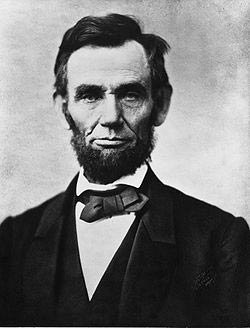 Abraham
lost his mother and his father moved away to Indiana. Abraham had to
work hard splitting logs and other manual labour. But, he also had a
thirst for knowledge and worked very hard to excel in his studies. This
led him to become trained as a lawyer. He spent eight years working on
the Illinois court circuit; his ambition, drive and capacity for hard
work were evident to all around him. He also had a good sense of humour
and was depreciating about his looks.
Abraham
lost his mother and his father moved away to Indiana. Abraham had to
work hard splitting logs and other manual labour. But, he also had a
thirst for knowledge and worked very hard to excel in his studies. This
led him to become trained as a lawyer. He spent eight years working on
the Illinois court circuit; his ambition, drive and capacity for hard
work were evident to all around him. He also had a good sense of humour
and was depreciating about his looks.“If I were two-faced, would I be wearing this one?”He married Mary Todd and had four children, although three died before reaching maturity.
As a lawyer, Abraham developed a great capacity for quick thinking and oratory. His interest in public issues encouraged him to stand for public office. In 1854 he was elected to the House of Representatives and he tried to gain nomination for the Senate in 1858. Although he lost this election, his debating skills caused him to become well known within the Republican party. In particular, during this campaign he gave one of his best remembered speeches.
A house divided against itself cannot stand. I believe this government cannot endure, permanently, half slave and half free. I do not expect the Union to be dissolved — I do not expect the house to fall — but I do expect it will cease to be divided. It will become all one thing or all the other. Either the opponents of slavery will arrest the further spread of it, and place it where the public mind shall rest in the belief that it is in the course of ultimate extinction; or its advocates will push it forward, till it shall become lawful in all the States, old as well as new — North as well as South (House Divided)In this House divided speech, Lincoln gave a prophetic utterance to the potential for slavery to divide the nation.
The reputation he gained on the campaign trail caused him to be elected as Republican nominee for President in 1860.
The election of Lincoln as President in 1861, sparked the South to succeed from the North. Southern independence sentiment had been growing for many years and the election of a president opposed to slavery was the final straw. However, Lincoln resolutely opposed the breakaway of the South and so this led to the American civil war. The civil war was much more costly than many people anticipated and at times Lincoln appeared to be losing the support of the general population. But, he managed to keep the Republican party together, stifling dissent by promoting the various Republican factions into the cabinet. Lincoln oversaw many of the military aspects of the war and promoted the general Ulysses S Grant to oversee the northern forces.
Initially the war was primarily about succession and the survival of the Union, but as the war progressed Lincoln increasingly made the issue of ending slavery paramount. To Lincoln, slavery was fundamentally wrong.
“Whenever I hear anyone arguing for slavery, I feel a strong impulse to see it tried on him personally.”On January 1, 1863, Lincoln issued his memorable Emancipation Proclamation that declared the freedom of slaves within the Confederacy.
“… all persons held as slaves within any State or designated part of a State, the people whereof shall then be in rebellion against the United States, shall be then, thenceforward, and forever free; and the Executive Government of the United States, including the military and naval authority thereof, will recognize and maintain the freedom of such persons,…” (Emancipation Proclamation)Eventually, after four years of attrition, the Federal forces secured the surrender of the defeated south. Lincoln had saved the union and also brought to head the end of slavery.
Dedicating the ceremony at Gettysburg on November 19, 1863, Lincoln declared:
Biography Mother Teresa
“It is not how much we do,- Mother Teresa
but how much love we put in the doing.
It is not how much we give,
but how much love we put in the giving.”
Short Biography Mother Teresa
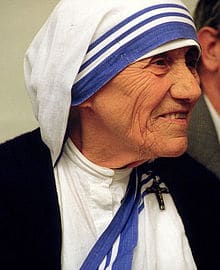 Mother
Teresa was born, 1910, in Skopje, capital of the Republic of Macedonia.
Little is known about her early life, but at a young age she felt a
calling to be a nun and serve through helping the poor. At the age of 18
she was given permission to join a group of nuns in Ireland. After a
few months of training, with the Sisters of Loreto, she was then given
permission to travel to India. She took her formal religious vows in 1931, and chose to be named after St Therese of Lisieux – the patron saint of missionaries.
Mother
Teresa was born, 1910, in Skopje, capital of the Republic of Macedonia.
Little is known about her early life, but at a young age she felt a
calling to be a nun and serve through helping the poor. At the age of 18
she was given permission to join a group of nuns in Ireland. After a
few months of training, with the Sisters of Loreto, she was then given
permission to travel to India. She took her formal religious vows in 1931, and chose to be named after St Therese of Lisieux – the patron saint of missionaries.On her arrival in India, she began by working as a teacher, however the widespread poverty of Calcutta made a deep impression on her; and this led to her starting a new order called “The Missionaries of Charity”. The primary objective of this mission was to look after people, who nobody else was prepared to look after. Mother Teresa felt that serving others was a key principle of the teachings of Jesus Christ. She often mentioned the saying of Jesus,
“Whatever you do to the least of my brethren, you do it to me.”As Mother Teresa said herself:
“Love cannot remain by itself — it has no meaning. Love has to be put into action, and that action is service .” – Mother Teresa
 She
experienced two particularly traumatic periods in Calcutta. The first
was the Bengal famine of 1943 and the second was the Hindu/Muslim
violence in 1946 – before the partition of India. In 1948, she left the
convent to live full time amongst the poorest of Calcutta. She chose to
wear a white Indian Sari, with blue trimmings – out of respect for the
traditional Indian dress.
For many years, Mother Teresa and a small band of fellow nuns survived
on minimal income and food, often having to beg for funds. But, slowly
her efforts with the poorest were noted and appreciated by the local
community and Indian politicians.
She
experienced two particularly traumatic periods in Calcutta. The first
was the Bengal famine of 1943 and the second was the Hindu/Muslim
violence in 1946 – before the partition of India. In 1948, she left the
convent to live full time amongst the poorest of Calcutta. She chose to
wear a white Indian Sari, with blue trimmings – out of respect for the
traditional Indian dress.
For many years, Mother Teresa and a small band of fellow nuns survived
on minimal income and food, often having to beg for funds. But, slowly
her efforts with the poorest were noted and appreciated by the local
community and Indian politicians.In 1952, she opened her first home for the dying, which allowed people to die with dignity. Mother Teresa often spent time with those who were dying. Some have criticised the lack of proper medical attention, and refusal to give painkillers. But, others say that it afforded many neglected people the opportunity to die knowing someone cared.
Over time the work grew. Missions were started overseas, and by 2013, there are 700 missions operating in over 130 countries. The scope of their work also expanded to include orphanages, and hospices for those with terminal illness.
“Not all of us can do great things. But we can do small things with great love.”
—- Mother TeresaMother Teresa never sought to convert those of an another faith. Those in her dying homes were given the religious rites appropriate to their faith. However, she had a very firm Catholic faith and took a strict line on abortion, the death penalty and divorce – even if her position was unpopular. Her whole life was influenced by her faith and religion, even though at times she confessed she didn’t feel the presence of God.
The Missionaries of Charity now has branches throughout the world including branches in the developed world where they work with the homeless and people affected with AIDS. In 1965, the Society became an International Religious Family by a decree of Pope Paul VI.
In the 1960s, the life of Mother Teresa was first brought to a wider public attention by Malcolm Muggeridge who wrote a book and produced a documentary called “Something Beautiful for God”.
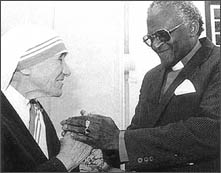 In
1979, she was awarded the Nobel Peace Prize “for work undertaken in the
struggle to overcome poverty and distress, which also constitutes a
threat to peace.” She didn’t attend the ceremonial banquet, but asked
that the $192,000 fund be given to the poor.
In
1979, she was awarded the Nobel Peace Prize “for work undertaken in the
struggle to overcome poverty and distress, which also constitutes a
threat to peace.” She didn’t attend the ceremonial banquet, but asked
that the $192,000 fund be given to the poor.In later years, she was more active in western developed countries. She commented that though the west was materially prosperous, there was often a spiritual poverty.
“The hunger for love is much more difficult to remove than the hunger for bread.”-— Mother Teresa
When she was asked how to promote world peace, she replied.
“Go home and love your family”Over the last two decades of her life, Mother Teresa suffered various health problems but nothing could dissuade her from fulfilling her mission of serving the poor and needy. Until her very last illness she was active in travelling around the world to the different branches of “The Missionaries of Charity” During her last few years, she met Princess Diana in the Bronx, New York. The two died within a week of each other.
Following Mother Teresa’s death the Vatican began the process of beatification, which is the second step on the way to canonisation and sainthood. Mother Teresa was formally beatified in October 2003 by Pope John Paul II and is now known as Blessed Teresa of Calcutta.
Mother Teresa was a living saint who offered a great example and inspiration to the world.
Awards Mother Teresa
- The first Pope John XXIII Peace Prize. (1971)
- Kennedy Prize (1971)
- The Nehru Prize –“for promotion of international peace and understanding”(1972)
- Albert Schweitzer International Prize (1975),
- The Nobel Peace Prize (1979)
- States Presidential Medal of Freedom (1985)
- Congressional Gold Medal (1994)
- Honorary citizenship of the United States (November 16, 1996),
Mahatma Gandhi Biography
“When I despair, I remember that all through history the ways of truth and love have always won. There have been tyrants, and murderers, and for a time they can seem invincible, but in the end they always fall. Think of it–always.”
- Gandhi
Short Bio Mahatma Gandhi
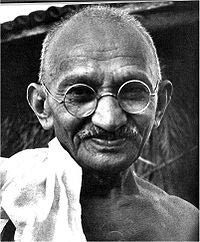 Mohandas
Gandhi was born, 1869, in Porbandar, India. Mohandas was from the
social cast of tradesmen. His mother was illiterate, but her common
sense and religious devotion had a lasting impact on Gandhi’s character.
As a youngster, Mohandas was a good student, but the shy young boy
displayed no signs of leadership. On the death of his father, Mohandas
travelled to England to gain a degree in law. He became involved with
the Vegetarian society and was once asked to translate the Hindu
Bhagavad Gita. This epic of Hindu literature awakened in Gandhi a sense
of pride in the Indian scriptures, of which the Gita was the pearl.
Mohandas
Gandhi was born, 1869, in Porbandar, India. Mohandas was from the
social cast of tradesmen. His mother was illiterate, but her common
sense and religious devotion had a lasting impact on Gandhi’s character.
As a youngster, Mohandas was a good student, but the shy young boy
displayed no signs of leadership. On the death of his father, Mohandas
travelled to England to gain a degree in law. He became involved with
the Vegetarian society and was once asked to translate the Hindu
Bhagavad Gita. This epic of Hindu literature awakened in Gandhi a sense
of pride in the Indian scriptures, of which the Gita was the pearl.Around this time, he also studied the Bible and was struck by the teachings of Jesus Christ – especially the emphasis on humility and forgiveness. He remained committed to the Bible and Bhagavad Gita throughout his life, though he was critical of aspects of both religions.
Gandhi in South Africa
On completing his degree in Law, Gandhi returned to India, where he was soon sent to South Africa to practise law. In South Africa, Gandhi was struck by the level of racial discrimination and injustice often experienced by Indians. It was in South Africa that Gandhi first experimented with campaigns of civil disobedience and protest; he called his non violent protests – satyagraha. Despite being imprisoned for short periods of time he also supported the British under certain conditions. He was decorated by the British for his efforts during the Boer war and Zulu rebellion.Gandhi and Indian Independence
After 21 years in South Africa, Gandhi returned to India in 1915. He became the leader of the Indian nationalist movement campaigning for home rule or Swaraj.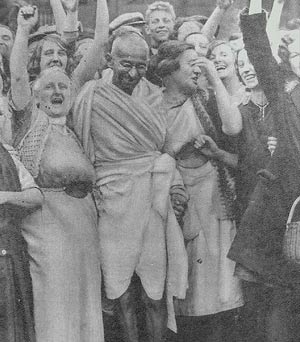 Gandhi
successfully instigated a series of non violent protest. This included
national strikes for one or two days. The British sought to ban
opposition, but the nature of non-violent protest and strikes made it
difficult to counter.
Gandhi
successfully instigated a series of non violent protest. This included
national strikes for one or two days. The British sought to ban
opposition, but the nature of non-violent protest and strikes made it
difficult to counter.Gandhi also encouraged his followers to practise inner discipline to get ready for independence. Gandhi said, the Indians had to prove they were deserving of independence. This is in contrast to independence leaders such as Aurobindo Ghose, who argued that Indian independence was not about whether India would offer better or worse government, but that it was the right for India to have self government.
Gandhi also clashed with others in the Indian independence movement such as Subhas Chandra Bose who advocated direct action to overthrow the British.
Gandhi frequently called off strikes and non-violent protest if he heard people were rioting or violence was involved.
In 1930, Gandhi led a famous march to the sea in protest at the new Salt Acts. In the sea they made their own salt – in violation of British regulations. Many hundreds were arrested and Indian jails were full of Indian independence followers.
However, whilst the campaign was at its peak some Indian protesters killed some British civilians, as a result Gandhi called off the independence movement saying that India was not ready. This broke the heart of many Indians committed to independence. It led to radicals like Bhagat Singh carrying on the campaign for independence, which was particularly strong in Bengal.
Gandhi and the Partition of India
After the war, Britain indicated that they would give India independence. However, with the support of the Muslims led by Jinnah, the British planned to partition India into two – India and Pakistan. Ideologically Gandhi was opposed to partition. He worked vigorously hard to show that Muslims and Hindus could live together peacefully. At his prayer meetings, Muslim prayers were read out along side Hindu and Christian prayers. However, Gandhi agreed to the partition and spent the day of Independence in prayer mourning the partition. Even Gandhi’s fasts and appeals were insufficient to prevent the wave of sectarian violence and killing that followed the partition.Away from the politics of Indian independence Gandhi was harshly critical of the Hindu Caste system. In particular he inveighed against the ‘untouchable’ caste, who were treated abysmally by society. He launched many campaigns to change the status of the untouchables. Although his campaigns were met with much resistance, they did go along way to changing century old prejudices.
At the age of 78, Gandhi undertook another fast to try and prevent the sectarian killing. After 5 days, the leaders agreed to stop killing. But, ten days later, Gandhi was shot dead by a Hindu Brahmin opposed to Gandhi’s support for Muslims and the untouchables.
Gandhi and Religion
Gandhi was a seeker of the truth.Biography Nelson Mandela
“I learned that courage was not the absence of fear, but the triumph over it. The brave man is not he who does not feel afraid, but he who conquers that fear. “- Nelson Mandela
Short Bio of Nelson Mandela
Nelson Mandela was born in Transkei, South Africa on July 18, 1918. He was the son of a local tribal leader of the Tembu tribe. As a youngster Nelson, took part in the activities and initiation ceremonies of his local tribe. However, unlike his father Nelson Mandela gained a full education, studying at the University College of Fort Hare and also the University of Witwatersrand. Nelson was a good student and qualified with a law degree in 1942.During his time at University, Nelson Mandela became increasingly aware of the racial inequality and injustice faced by non-white people. In 1943, he decided to join the ANC and actively take part in the struggle against apartheid.
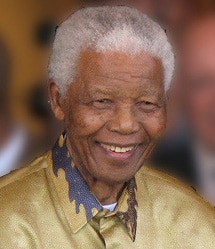 As
one of the few qualified lawyers, Nelson Mandela was in great demand;
also his commitment to the cause saw him promoted through the ranks of
the ANC. In 1956, Nelson Mandela, along with several other members of
the ANC were arrested and charged with treason. After a lengthy and
protracted court case the defendants were finally acquitted in 1961.
However, with the ANC now banned, Nelson Mandela suggested an active
armed resistance to the apartheid regime. This led to the formation of
Umkhonto we Sizwe, which would act as a guerilla resistance movement.
Receiving training in other African countries, the Umkhonto we Sizwe
took part in active sabotage.
As
one of the few qualified lawyers, Nelson Mandela was in great demand;
also his commitment to the cause saw him promoted through the ranks of
the ANC. In 1956, Nelson Mandela, along with several other members of
the ANC were arrested and charged with treason. After a lengthy and
protracted court case the defendants were finally acquitted in 1961.
However, with the ANC now banned, Nelson Mandela suggested an active
armed resistance to the apartheid regime. This led to the formation of
Umkhonto we Sizwe, which would act as a guerilla resistance movement.
Receiving training in other African countries, the Umkhonto we Sizwe
took part in active sabotage.In 1963, Mandela was again arrested and put on trial for treason. This time the State succeeded in convicting Mandela of plotting to overthrow the government. However, the case received considerable international attention and the apartheid regime of South Africa became under the glare of the international community. At the end of his trial, Nelson Mandela made a long speech, in which he was able to affirm his commitment to the ideals of democra
Winston Churchill short biography
 Sir
Winston Leonard Spencer-Churchill, KG, OM, CH, TD, FRS, PC (30 November
1874 – 24 January 1965) was a British politician and author, best known
as Prime Minister of the United Kingdom during the Second World War.
Sir
Winston Leonard Spencer-Churchill, KG, OM, CH, TD, FRS, PC (30 November
1874 – 24 January 1965) was a British politician and author, best known
as Prime Minister of the United Kingdom during the Second World War.Churchill was famous for his stubborn resistance to Hitler during the darkest hours of the Second World War.
Short Bio Winston Churchill
Winston was born at Blenheim Palace, Woodstock near Oxford to an aristocratic family – the Dukes of Marlborough. He was brought up by servants and friends of the family. He rarely spoke to his father and his mother rarely saw him when at boarding school. Churchill went to Harrow school. He wasn’t the best student, having a rebellious nature and slow to learn; but Churchill excelled at sports and joined the officer cadet corps, which he enjoyed.
On leaving school, he went to Sandhurst to train as an officer. After gaining his commission, Churchill sought to gain as much active military experience as possible. He used his mothers connections to get postings to areas of conflict. The young Churchill gained postings to Cuba, and North West India. He also combined his military duties with working as a war correspondent – earning substantial money for his reports on the fighting.
In 1899, he resigned from the military and pursued his career as a war correspondent. He was in South Africa for the Boer War, and he became a minor celebrity for his role in taking part in a scouting patrol, getting captured and later escaping. He might have gained the Victoria Cross for his efforts, though officially he was a civilian at the time. After this experience, he gained a temporary commission in the South Africa Light Horses and later commented he had a ‘good war’ whilst continuing his work as a war correspondent.
MP
Churchill returned to the UK in 1900 and successfully stood as a Conservative candidate for Oldham. After becoming an MP, Churchill began a lucrative speaking tour, where he could command a high price for his speeches.
In 1904, he made a dramatic shift, leaving the Conservative Party and joining the Liberal Party. He was later often called a ‘class traitor’ by some Conservative colleagues. Churchill disagreed with an increasing amount of Conservative policies, including tariff protection. Churchill also had more empathy for improving the lot of the working class and helping the poor.
In the Liberal Party, Churchill made a meteoric political rise. By 1908 he was made President of the Board of Trade and he was a key supporter of Lloyd George’s radical People’s Budget – a budget which saw the growth of an embryonic Welfare State and introduction of income tax to pay for it. The budget made a significant improvement to the life of the poor and helped to address the inequality of British society.
Biography of Bill Gates
Short bio of Bill Gates
William Henry Gates was born on October 28, 1955 in Seattle, Washington)As founder of Microsoft, Bill Gates is one of the most influential and richest people on the planet. Recent estimates of his wealth put it at $56 billion, this is the equivalent of the combined GDP of several African economies. In recent years he has retired from working full time at Microsoft, instead he has concentrated on working with his charitable foundation “The Bill and Melinda Gates Foundation”
Bill Gates foundation of Microsoft
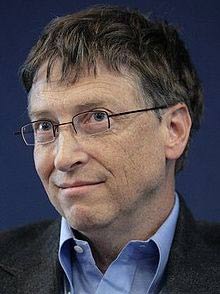 Bill
Gates founded Microsoft in 1976 when he formed a contract with MITTS
(Micro Instrumentation and Telemetry Systems) to develop a basic operating system
for their new microcomputers. In the early days Bill Gates would review
every line of code. He was also involved in several aspects of
Microsoft’s business such as packing and sending off orders.
Bill
Gates founded Microsoft in 1976 when he formed a contract with MITTS
(Micro Instrumentation and Telemetry Systems) to develop a basic operating system
for their new microcomputers. In the early days Bill Gates would review
every line of code. He was also involved in several aspects of
Microsoft’s business such as packing and sending off orders.The big break for Microsoft came in 1980 when IBM approached them for a new BASIC operating system for its new computers. In the early 1980s IBM was by far the leading PC manufacture. However increasingly there developed many IBM PC clones; (PCs developed by other companies compatible with IBM’s). Microsoft worked hard to sell its operating system to these other companies. Thus Microsoft was able to gain the dominant position of software manufacture just as the personal computer market started to boom. Since its early dominance no other company has come close to displacing Microsoft as the dominant provider of computer operating software.
Bill Gates – Windows
In 1990 Microsoft released its first version of Windows. This was a break through in operating software as it replaced text interfaces with graphical interfaces. It soon became a best seller and was able to capture the majority of the operating system market share. In 1995 Windows 95 was released, setting new standards and features for operating systems. This version of windows has been the backbone of all future releases from Windows 2000 to the latest XP and Vista.Throughout his time in office Bill Gates has been keen to diversify the business of Microsoft. For example Microsoft’s Internet Explorer has become the dominant web browser, although this is mainly because it comes pre installed on most new computers. In one area at least Microsoft has not gained Monopoly power, and that is in the area of search engines. MSN live search has struggled to gain more than 12% of market share. In this respect Microsoft has been dwarfed by Google. Nevertheless the success of Microsoft in cornering various aspects of the software market has led to several anti trust cases. In 1998 US v Microsoft, Microsoft came close to being broken up into 3 smaller firms. However on appeal Microsoft were able to survive as a single firm.
Philanthropic Activities – Bill Gates
Bill Gates is married to Melinda French (married in 1992). They have 3 children Jennifer (1996), Rory (1999) and Phoebe (2002). With his wife Bill Gates formed the Bill & Melinda Gates Foundation. Bill Gates says much of the inspiration came from the example of David Rockefeller. Like Rockefeller, Gates has sought to focus on global issues ignored by the government; he also expressed an interest in improving the standards of public school education in the US. He has appeared with Oprah Winfrey to promote this objective. In respect to charitable, philanthropic activities Gates has also received encouragement from investor Warren Buffet. Recently Gates announced that from 2008 he would work full time on his philanthropic interests. Forbes magazine 2004 estimated that Gates has given over $24 billion dollars in the 4 years from 2000 to 2004.Citation : . “Biography of Bill Gates”, Oxford,, 25th Feb. 2010
Muhammad Ali Biography
“I’m not the greatest; I’m the double greatest. Not only do I knock ‘em out, I pick the round. “– Muhammad Ali
Short Biography Muhammad Ali
Muhammad Ali (born Cassius Marcellus Clay, Jr. on January 17, 1942) is a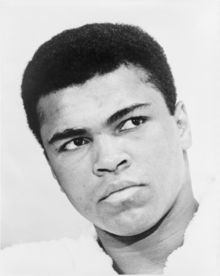 retired
American boxer. In 1999, Ali was crowned “Sportsman of the Century” by
Sports Illustrated. He won the World Heavyweight Boxing championship
three times, and won the North American Boxing Federation championship
as well as an Olympic gold medal.
retired
American boxer. In 1999, Ali was crowned “Sportsman of the Century” by
Sports Illustrated. He won the World Heavyweight Boxing championship
three times, and won the North American Boxing Federation championship
as well as an Olympic gold medal.Ali was born in Louisville, Kentucky. He was named after his father, Cassius Marcellus Clay, Sr., (who was named for the 19th century abolitionist and politician Cassius Clay). Ali later changed his name after joining the Nation of Islam and subsequently converted to Sunni Islam in 1975.
Early boxing career
Standing at 6’3″ (1.91 m), Ali had a highly unorthodox style for a heavyweight boxer. Rather than the normal boxing style of carrying the hands high to defend the face, he instead relied on his ability to avoid a punch. In Louisville, October 29, 1960, Cassius Clay won his first professional fight. He won a six-round decision over Tunney Hunsaker, who was the police chief of Fayetteville, West Virginia. From 1960 to 1963, the young fighter amassed a record of 19-0, with 15 knockouts. He defeated such boxers as Tony Esperti, Jim Robinson, Donnie Fleeman, Alonzo Johnson, George Logan, Willi Besmanoff, Lamar Clark (who had won his previous 40 bouts by knockout), Doug Jones, and Henry Cooper. Among Clay’s victories were versus Sonny Banks (who knocked him down during the bout), Alejandro Lavorante, and the aged Archie Moore (a boxing legend who had fought over 200 previous fights, and who had been Clay’s trainer prior to Angelo Dundee). Clay
won a disputed 10 round decision over Doug Jones, who, despite being
lighter than Clay, staggered Clay as soon as the fight started with a
right hand, and beat Clay to the punch continually during the fight. The
fight was named “Fight of the Year” for 1963. Clay’s next fight was
against Henry Cooper, who knocked Clay down with a left hook near the
end of the fourth round. The fight was stopped in the 5th round due to a
deep cut on Cooper’s face.
Clay
won a disputed 10 round decision over Doug Jones, who, despite being
lighter than Clay, staggered Clay as soon as the fight started with a
right hand, and beat Clay to the punch continually during the fight. The
fight was named “Fight of the Year” for 1963. Clay’s next fight was
against Henry Cooper, who knocked Clay down with a left hook near the
end of the fourth round. The fight was stopped in the 5th round due to a
deep cut on Cooper’s face.Despite these close calls against Doug Jones and Henry Cooper, he became the top contender for Sonny Liston’s title. In spite of Clay’s impressive record, he was not expected to beat the champ. The fight was to be held on February 25, 1964 in Miami, Florida. During the weigh-in on the previous day, the ever-bashful Ali—who frequently taunted Liston during the buildup by dubbing him “the big ugly bear”, among other things—declared that he would “float like a butterfly and sting like a bee,” and, in summarizing his strategy for avoiding Liston’s assaults, said, “Your hands can’t hit what your eyes can’t see.”
No comments:
Post a Comment